 |
|
IN THIS ISSUE:
» Motor Control For Designers (Part 1): Basic Principles Of Motor Theory
» Non-Inverting Integrators Are Not Really Integrators (Part 3): Impact On Rogowski Sensors
» Focus On Magnetics:
Optimized Magnetics Winding Design (Part 2): Minimized Winding Resistance For Constant Layers Or Strands
» Industry Event: EOS/ESD Symposium
» Power Products
» Industry Event: PCIM Asia Shanghai
» Other Top Power News
From the Editor's Desk David G. Morrison
Editor, HOW2POWER TODAY

Data center energy use is getting much attention these days. According to one fairly aggressive projection, it will rise from about 2% in 2022 to 7% of worldwide electricity use in 2030.[1] However, even that predicted figure pales in comparison with that of electric motors. As early as 2016, the IEA indicated that motors account for 53% of electrical energy consumption worldwide[2] and that number is still being cited. That motor energy consumption is mainly attributed to industrial applications and does not appear to include electric vehicles, which are typically charged from the grid. This suggests that with the continuing trend of vehicle electrification, motors may be on their way to demanding an even greater share of global electricity usage. Against this backdrop, the role of motor drive design—with all of its implications for energy efficiency—becomes increasingly important. And with that, an understanding of motor theory and motor design becomes necessary for more engineers. To that end, a new series of articles by Dennis Feucht will offer a tutorial on both of these topics, focusing on permanent-magnet synchronous motors which find application in EVs and robotics, for example. As Dennis explains, “This will not be a rehash of the usual textbook coverage. It will have sufficient theory, with math reduced to algebra from vector calculus, and the industrial [practical] orientation will be evident.” Part 1 kicks offer the initial series on motor theory, to be followed by subsequent series on motor design, motor drive design, and motion control. To those who appreciate the design-oriented, analytical approach to magnetics design presented in Dennis’ articles on power supply magnetics (including his latest here on winding design), the new articles should provide similar insights into the design and optimization of magnetics for motors. This issue also presents another part in the series on inverting vs. noninverting integrators, more conference previews, the latest power product news and more.
|
|

|
HOW2POWER EXCLUSIVE DESIGN ARTICLES 
|
Motor Control For Designers (Part 1): Basic Principles Of Motor Theory
by Dennis Feucht, Innovatia Laboratories, Cayo, Belize
With the rising popularity of electronically commutated motors such as brushess dc motors, permanent magnet synchronous motors and variable reluctance motors, requirements for motor control and motor drive design are growing. For electronics engineers seeking proficiency in these topics, it’s necessary to learn not only how the controllers and inverters operate, but also how the motors themselves work. Likewise, motor designers may benefit from an understanding of how the circuits driving the motors function. This article kicks off a mini-course on motors and circuits that aims to inform both the circuit and the motor designers by covering the following topics: 1) motor theory, 2) motor design, 3) motor-drive design, and 4) motion control. The goal in publishing these four series is to convey a working design knowledge of electric machines and the electronics and software to control them. Read the article…
|
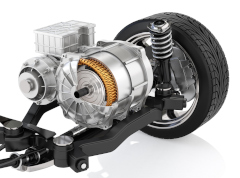
Unlike existing textbooks, which are
useful for learning motor theory and are
are mainly oriented to analysis, this
mini-course will be design-oriented. |

|
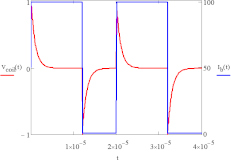
In this article, we create an analytic
expression for two (or more) rectangular
pulses and analyze how their derivatives
are processed by inverting and
non-inverting integrators. |
Non-Inverting Integrators Are Not Really Integrators (Part 3): Impact On Rogowski Sensors
by Gregory Mirsky, Design Engineer, Deer Park, Ill.
In previous parts we considered general properties of inverting and non-inverting integrators and figured out that a non-inverting configuration is not an integrator at all. We have come to that conclusion by analyzing the amplitude-frequency characteristics of both configurations. However, we would also like to know the impact of these characteristics in a key integrator application—the Rogowski coil sensor. To do this, we’ll analyze the responses of both the inverting and non-inverting integrator configurations to the derivatives of rectangular pulses. We are using rectangular pulses because they have a wide spectrum and thus represent the worst case. And while we’ve cast doubt on the value of non-inverting integrator configurations, we’ll still include them in our analysis because of the frequency with which they appear in a plethora of publications. Read the article…
|


FOCUS ON MAGNETICS 
Sponsored by Payton Planar Magnetics
A monthly column presenting information on power magnetics design, products, or related technology |
Optimized Magnetics Winding Design (Part 2): Minimized Winding Resistance For Constant Layers Or Strands
by Dennis Feucht, Innovatia Laboratories, Cayo, Belize
In the previous part of this article, the constant-frequency eddy-current resistance ratio Fr, which is usually plotted with constant M winding layers as a parameter, instead allows M to vary according to various geometric constraints on the winding window such as number of bundle strands or winding cross-sectional area. However, as we discovered in the earlier analysis, making winding area constant did not lead to a clear minimum for Fr and therefore provided no clarity on optimal wire size. In this article, we see how this problem can be overcome by solving for the constant-frequency eddy-current resistance ratio of a bundle (Fr / Ns), rather than that of the individual strands. We then delve further into how this resistance ratio varies for constant number of layers and strands, and in part 3, constant winding area.
Read the article…
|

 |
 |

 |

|

INDUSTRY EVENT
 |
|
The 47th Annual EOS/ESD Symposium & Exhibits—Your Destination For ESD Engineering Excellence
by Mirko Scholz, Symposium General Chair
Are you an engineer working with ESD-sensitive devices, systems, or environments? Mark your calendar for September 13–21, 2025, and join us at the Riverside Convention Center in Riverside, California for the 47th Annual EOS/ESD Symposium & Exhibits—the premier event dedicated entirely to electrostatic discharge (ESD) technology and engineering. This year’s symposium promises to be a dynamic, content-rich experience that brings together professionals from around the world for learning, innovation, and community. Read the full story…
|


POWER PRODUCTS  |

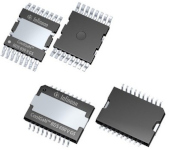
Infineon Technologies’ CoolGaN
bidirectional switch G5. |
Bidirectional 650-V GaN Switch Enables More Efficient Power Conversion Across Multiple Applications
 Screenshot: The bidirectional switch (BDS) can replace two conventional switches, reducing component count, cost, size, and overall power losses. Among its various uses, the BDS simplifies the design of cycloconverter topologies, enabling single-stage power conversion. Screenshot: The bidirectional switch (BDS) can replace two conventional switches, reducing component count, cost, size, and overall power losses. Among its various uses, the BDS simplifies the design of cycloconverter topologies, enabling single-stage power conversion.
See the full story…
|

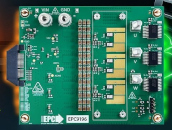
EPC’s EPC9196 BLDC motor drive
inverter reference design. |
GaN-Based Inverter Reference Design For Medium-Voltage Motor Drives
 Photo: This 25-Arms, three-phase BLDC motor drive inverter design is optimized for 96- to 150-V battery applications such as those founds in in robotics, automated guided vehicles (AGVs), and compact EVs It leverages the low losses of the EPC2304 200-V, 3.5-mΩ eGaN FET. Photo: This 25-Arms, three-phase BLDC motor drive inverter design is optimized for 96- to 150-V battery applications such as those founds in in robotics, automated guided vehicles (AGVs), and compact EVs It leverages the low losses of the EPC2304 200-V, 3.5-mΩ eGaN FET.
See the full story…
|


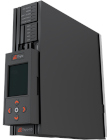
Advanced Energy Industries’
Thyro-XD SCR power controller. |
Power Controller Increases Stability Of Semiconductor And Industrial Processes
 Photo: Measuring 46 mm (w) x 150 mm (h) x 154 mm and weighing 0.9 kg, the digital thyristor SCR power controller is compact, lightweight and easy to connect to process and automation technology. It targets SEMI lamp driver processes such as epitaxial growth and rapid thermal annealing applications. Photo: Measuring 46 mm (w) x 150 mm (h) x 154 mm and weighing 0.9 kg, the digital thyristor SCR power controller is compact, lightweight and easy to connect to process and automation technology. It targets SEMI lamp driver processes such as epitaxial growth and rapid thermal annealing applications.
See the full story…
|


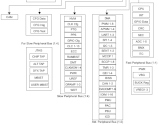
Microchip Technology’s dsPIC33AK512MPS512
and dsPIC33AK512MC510 DSCs. |
Digital Signal Controllers Offer Improved PWM Resolution And ADC Speed
 Diagram: These DSCs feature specialized peripherals for efficient power conversion. The devices enable the implementation of computation-intensive control algorithms for improved energy efficiency in motor control, AI server power supplies, energy storage systems and complex sensor signal processing with machine learning-based inferencing. Diagram: These DSCs feature specialized peripherals for efficient power conversion. The devices enable the implementation of computation-intensive control algorithms for improved energy efficiency in motor control, AI server power supplies, energy storage systems and complex sensor signal processing with machine learning-based inferencing.
See the full story…
|


|

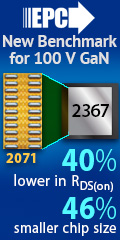






|

INDUSTRY EVENT
 |
|
PCIM Asia Shanghai Anticipates Large Gathering Of Power Electronics Community This September
PCIM Asia is coming to Shanghai. The next edition of this annual conference will be held September 24-26, 2025 at the Shanghai New International Expo Centre (SNIEC). An estimated 25,000+ visitors are expected to tour a projected 260+ exhibits. Meanwhile, at the conference held alongside the expo, an estimated 1000+ visitors are expected to attend the presentation of 150+ papers. PCIM Asia Shanghai has been integrated in the China exhibition market since 2002 and is the only exhibition in China specializing in power electronics and its applications in the fields of intelligent motion, renewable energy and energy management. Read the full story…
|

 |
 |

OTHER TOP POWER NEWS
|
|
 Empower Semiconductor and Marvell are collaborating on a next-generation integrated power delivery solution for AI and cloud platforms. Empower Semiconductor and Marvell are collaborating on a next-generation integrated power delivery solution for AI and cloud platforms.
 Ferric and Marvell have also announced a collaboration on integrated voltage regulation for AI and cloud infrastructure. Ferric and Marvell have also announced a collaboration on integrated voltage regulation for AI and cloud infrastructure.
 The IEEE Workshop on Wide Bandgap Power Devices and Applications (WiPDA 2025), which will be held in Fayetteville, Ark., Nov. 10 - 12, 2025, has issued a call for papers. The IEEE Workshop on Wide Bandgap Power Devices and Applications (WiPDA 2025), which will be held in Fayetteville, Ark., Nov. 10 - 12, 2025, has issued a call for papers.

|



 Infineon has partnered with Typhoon HIL, a provider of hardware-in-the-loop simulation solutions, to enable a real-time development and test environment for customers building key elements of xEV powertrain systems. Infineon has partnered with Typhoon HIL, a provider of hardware-in-the-loop simulation solutions, to enable a real-time development and test environment for customers building key elements of xEV powertrain systems.
 The IEEE Electronic Components & Technology Conference (ECTC), a premier technical conference and exhibition for the world semiconductor packaging industry, had a record attendance of 2,518 attendees for its 75th annual event. The IEEE Electronic Components & Technology Conference (ECTC), a premier technical conference and exhibition for the world semiconductor packaging industry, had a record attendance of 2,518 attendees for its 75th annual event.
 Infineon has received a Business Partner Award from DENSO. Infineon has received a Business Partner Award from DENSO.




 Magna-Power has reduced build-times to just 4–6 weeks for most products. Magna-Power has reduced build-times to just 4–6 weeks for most products.
 Navitas Semiconductor has announced plans for 200-mm GaN production with PSMC. Navitas Semiconductor has announced plans for 200-mm GaN production with PSMC.



 Powercast has added Etherdyne's magnetic resonance to its wireless power portfolio. Powercast has added Etherdyne's magnetic resonance to its wireless power portfolio.
 RIR Power Electronics has expanded manufacturing of 1200-V SiC diodes in collaboration with Pro Asia Semiconductor. RIR Power Electronics has expanded manufacturing of 1200-V SiC diodes in collaboration with Pro Asia Semiconductor.

ABOUT THIS NEWSLETTER: Thank you for reading HOW2POWER TODAY.
How2Power sends no more than one e-mail per month to registered users. Continuing your subscription ensures you'll receive future newsletters. Manage Your Subscription
©2020 All rights reserved. www.how2power.com
|
|